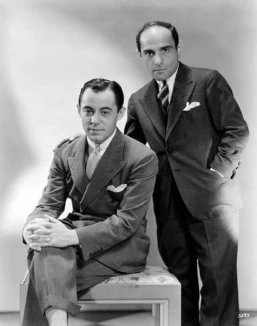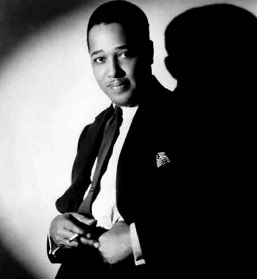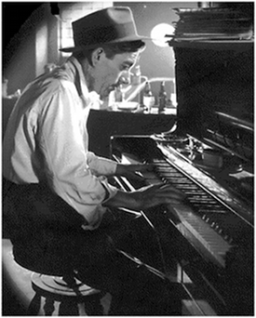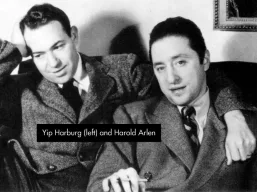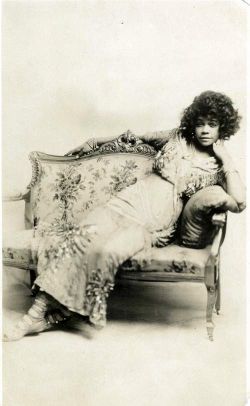1920 selected standards and hits
___________________________________
Avalon (Vincent Rose, Al Jolson, B.G. DelSylva)
Look for the Silver Lining (Jerome Kern, B. G. DeSylva)
Margie (m. Con Conrad & J. Russel Robinson, w. Benny Davis)
Whispering (m. John Schonberger, w. Malvin Schonberger)
Wang Wang Blues (m. Gus Mueller, Buster Johnson & Henry Busse, w. Leo Wood)
Wild Rose (m. Jerome Kern, w. Clifford Grey)
After You Get What You Want You Don’t Want It (Irving Berlin)
Separate feature page:
The Japanese Sandman (m. Richard A. Whiting, w. Raymond B. Egan)
_________________________________
Avalon (Vincent Rose, Al Jolson, B.G. DeSylva)
In the JazzStandards.com page on the song, Chris Tyle notes that the original sheet music bore only the names of Jolson and Rose, with DeSylva’s name being added at some unspecified later date, but suggests that
It is possible that [DeSylva] did have a hand in the lyrics, as he wrote lyrics to many of the songs performed by and purportedly composed by Jolson.
The article further speculates that Jolson may have been given songwriting credit as a marketing ploy, because during his peak, from his first hit record in 1912 to the waning of his popularity in 1930s, “almost anything he performed turned to gold.”
From Wikipedia:
A popular jazz standard, [Avalon] has been recorded by many artists, including Cab Calloway (1934), Coleman Hawkins (1935) and Eddie Durham (1936). The Benny Goodman Quartet played the song in their famous Carnegie Hall show in 1938. The song was included in the biographical films The Jolson Story (1946) and The Benny Goodman Story (1956).
___________________________
Al Jolson – 1920
.
Red Nichols & his Five Pennies – 1928
.
Jan Garber & his Orchestra, 1937
.
Benny Goodman – live at the Aurex Jazz Festival, 3 September 1980 at Budokan, Tokyo – The band: cl:Benny Goodman, p:Teddy Wilson, g:Eddie Duran, b:Al Obidenski, dr:John Markham
_________________________
Look for the Silver Lining (Jerome Kern, B. G. DeSylva) was written in 1919 for the unsuccessful musical Zip, Goes a Million. In 1920 it was published and reused in the musical Sally whence it was popularized by Marilyn Miller. Marion Harris recorded the song in 1920.
Marion Harris, 1920
.
Charles Harrison and Edna Brown (Elsie Baker) – 14 January 1921
.
Connee Boswell with Victor Young and his Orchestra – 8 July 1941
.
Jessie Matthews – 1942
.
Judy Garland – from the ‘Jerome Kern Memorial’ on CBS Radio, broadcast on 12 September 1945
.
Chet Baker – from Chet Baker Sings, 1956 — Chet Baker (tp, vo) Russ Freeman (p) Carson Smith (b) Bob Neal (d), recorded at Capitol Studios, Melrose Avenue, Los Angeles, CA, 15 February 1954
.
The provider seems to indicate that the following recording is from Baker’s album Cool Spring – 1959
.
Eddie Albert – 1958
_____________________
 Margie (m. Con Conrad & J. Russel Robinson, w. Benny Davis) was introduced by the Original Dixieland Jazz Band. The song was named after the five-year-old daughter of singer and songwriter Eddie Cantor. Cantor is credited with popularizing the song with his 1921 recording… — wikipedia excerpt
Margie (m. Con Conrad & J. Russel Robinson, w. Benny Davis) was introduced by the Original Dixieland Jazz Band. The song was named after the five-year-old daughter of singer and songwriter Eddie Cantor. Cantor is credited with popularizing the song with his 1921 recording… — wikipedia excerpt
You may talk about your love affairs,
Here’s one I’d like to tell to you,
All night long they sit upon the stairs,
He holds her close and starts to coo:
My little Margie, I’m always thinkin’ of you, Margie
I’ll tell the world I love you
Don’t forget your promise to me,
I have bought the home and ring and everything
For Margie–you’ve been my inspiration
Days are never blue
After all is said and done
Really there is only one
Oh, Margie, Margie it’s you!
Original Dixieland Jazz Band – 1920
.
Eddie Cantor – 1921
.
Cab Calloway & his Orchestra – 1932
_________________
Whispering (m. John Schonberger, w. Malvin Schonberger)
From Wikipedia:
Whispering…was originally recorded on August 23,1920 by Paul Whiteman and his Orchestra for Victor as 18690-A. Denver-born ex-army bandleader Whiteman was dubbed “King of Jazz”, an appellation supported largely by a long series of hits beginning in 1920 with his release of “Whispering”, an eleven-week U.S. No. 1 hit, which stayed 20 weeks in the charts and sold in excess of two million copies.
Paul Whiteman & his Orchestra – 1920
.
.
Al Bowlly – 1932 — The band is the Jack MacDermott Orchestra, according to the video provider. Thus far I’ve been unable to find any reference to such an entity elsewhere on the WWW, except for links and references to this video, plus one obscure reference to another recording attributed to the same pairing of band and vocalist on the song Mona Lisa.
_______________________
Wang Wang Blues (m. Gus Mueller, Buster Johnson & Henry Busse, w. Leo Wood)
Mamie Smith and her Jazz Hounds – recorded 5 September 1921
.
Mal Hallett’s Orchestra – 1929
The provider attaches this information about Hallett:
Violinist and bandleader Hallett graduated from the Boston Conservatory of Music. During WW1, Hallett toured France as a member of the Al Moore Orch. In 1929, his career as a bandleader began when he started recording for Edison. Hallett’s 1930’s orchestra toured all over the New England states, usually in one-nighters. He was pioneering a “Swing band” before “Swing bands” had been invented. His bands included many musicians who would later achieve fame as great sidemen. Among these are: Gene Krupa (drums), Buddy Wise (sax), Toots Mondello (sax), Jack Teagarden (trombone) and many others. As for this amazing recording, it is one of those very first recordings, made in 1929.
.
Henry Busse and his Orchestra – 1934
.
Benny Goodman Sextet – 1941
_____________________
Wild Rose (m. Jerome Kern, w. Clifford Grey) was written for the Broadway musical comedy Sally, produced by Florence Ziegfeld, which opened on December 21 December 1920 at the New Amsterdam Theatre on Broadway. It was sung by “Sally of the Alley” played by Marilyn Miller and a chorus line of diplomats.
The High Hatters with vocal by Frank Luther – recorded 16 December 1929
.
Marilyn Miller recreates her role in the 1929 Warner Bros. film, Sally.
______________________
The Japanese Sandman (m. Richard A. Whiting, w. Raymond B. Egan)
Visit our separate feature page:
_____________________
After You Get What You Want You Don’t Want It (Irving Berlin)
Van & Schenck — 1920
.
Marilyn Monroe with the 20th Century Fox Orchestra and Chorus — The recording was issued in 1955 on the B-side of “Heat Wave,” on the single RCA Victor 47-6033, with the label note “from the soundtrack of Irving Berlin’s [1954 film] There’s No Business Like Show Business.“ However, according to Discogs.com, the soundtrack album was released on Decca.





















